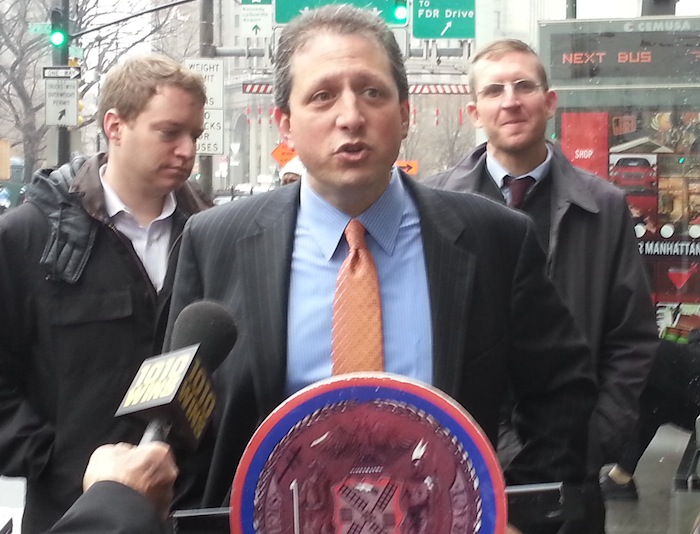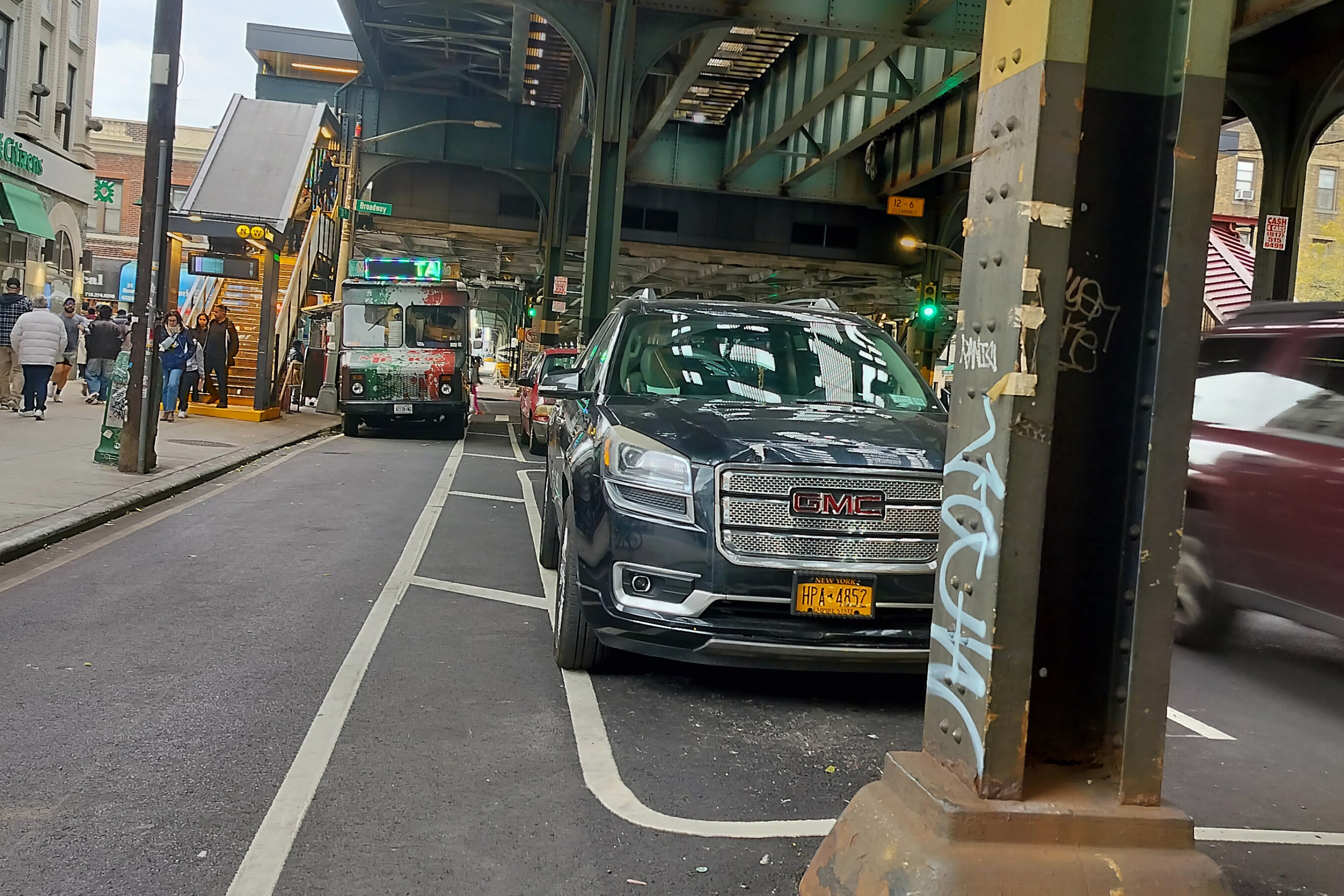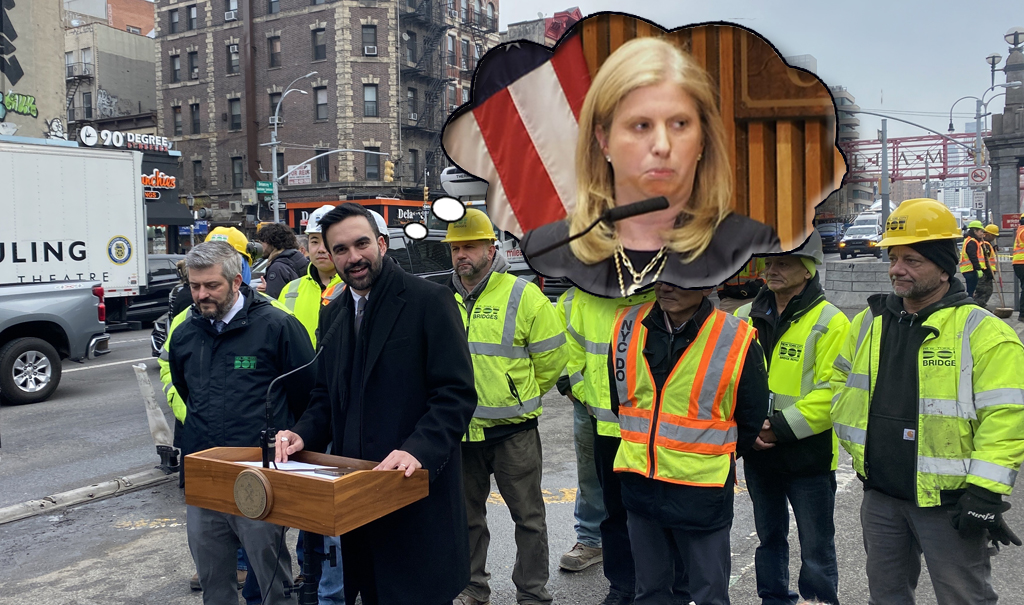Oh, you mean really reckless drivers!
The "Reckless Driver Accountability Act" that the City Council is expected to approve on Tuesday will seize the cars of far fewer repeat scofflaws than originally anticipated, the result of negotiations with the de Blasio administration that whittled the proposal's sharpest teeth.
The original legislation by Council Member Brad Lander had called for cars to be taken whenever they rack up five or more camera-issued red light and/or speeding tickets in any given 12-month period. But the bill now allows authorities to seize cars only after either five red light tickets or 15 (fifteen!) speed-camera violations.
When the original bill was announced, there were roughly 26,000 cars meeting the threshold of five or more tickets. Now, even with far more cameras in place around the city, only roughly 3,200 cars meet the new "five-or-15" threshold, according to city data. That number is expected to rise to about 5,000 once all 750 school-zone camera systems are installed by the end of the year.
Lander said the program remained revolutionary, even though the numbers are smaller and drivers who get four red-light tickets and 14 speeding tickets in 12 months will not face any consequences beyond paying the tickets.
"I understand how people will be disappointed — and I sympathize because I'd love it to be larger," the Brooklyn Council Member told Streetsblog. "But this is a first-of-its-kind thing, so getting started is great. And remember, this law is still targeting the most reckless drivers."
As previously reported by Streetsblog, the Lander bill has been painstakingly crafted — and negotiated — with city lawyers to get the mayor's support, to survive anticipated legal challenges and, no less important, to not be so big that it inundates existing agencies. The de Blasio administration, for example, does not currently have the capacity to seize and hold as many cars as proposed in the original bill.
"Everyone has a shared interest in making sure the program is well run and it works — and we can prove that it works — so we can expand it all over the city and then all over the country," he said. "This is still ambitious and significant and on a scale that hasn't been done before. Getting this done is a very big deal."
It's also disappointing to some activists.
"It is watered down," said Mary Beth Kelly of Families for Safe Streets, which has supported the bill every step of the way. "We are always conceding something, and it may be lives. But the good news: The people with the 15 speeding tickets — a number that is extreme — will get nabbed. These [drivers] should make the press [as] a warning to others."
The bill's basic mechanism is the same as it was before: drivers will receive written warnings that each camera-issued ticket is getting them one closer to having their car seized. Upon reaching the threshold, a driver will get another warning explaining that his or her car can be seized unless the driver enrolls in a "safe vehicle operation course." If the driver completes the course, he or she gets a clean slate — if the driver avoids another ticket for six months.
If the driver does not complete the course, the car will be seized by authorities and held ... until the driver completes the course.
Lander believes the hands-on, instructor-led driver training class — similar to those already conducted by the Center for Court Innovation in Red Hook and Staten Island — will reduce recidivism. Research has shown that drivers are 40 percent less likely to be rearrested for traffic offenses than drivers who did not take such a course.
But that program is currently relatively small, and it's no small matter to ramp it up so it can accommodate thousands of drivers in all five boroughs who will reach the "five or 15" threshold — which is another reason Lander agreed to the higher trigger.
"We did a lot of work on the volume that the city could handle," he said. "When we prove it works, it can be expanded."
Indeed, Lander's bill is only a pilot program that expires in three years after it goes into effect. Additionally, reckless drivers' tickets won't count towards the "five or 15" threshold until eight months after the bill is signed, meaning that the tens of thousands of repeat recidivist drivers currently on the road start with the same clean slate as that proverbial old lady who only drives to church every Sunday.
"Look, I wish we could just take reckless drivers' cars away and never give them back, but legally, you can't do that," Lander said.
Officially, Transportation Alternatives, which has backed the bill from its inception, said "it's still a very good bill."
"It still result in several thousand drivers/owners being required to take the safe driving and awareness course, which has shown very promising lowering of re-offending," said the group's Deputy Director Marco Conner. "With the expansion into the world's-largest speed camera program I don't see how the Reckless Driver Accountability Act could go from zero cars eligible for impoundment to tens of thousands — it would have meant disregarding most of those eligible which would be a bad precedent to set for the program to have a deterring effect.
"I was initially disappointed," Conner added, "but I think this is a robust pilot. And with the first report due after 12 months there is opportunity to adjust, improve and potentially expand within the first three years — which we intend to do if the program is as effective as we expect."
Families for Safe Streets co-founder Amy Cohen also thinks Lander found the right balance.
"We are so grateful that bill is finally going to be brought for a vote," she said. "The vast majority of people only get one ticket and never get another. The speed cameras work to change behavior for nearly everyone. This program will target those who just cannot seem to obey the law even after getting many tickets."
The bill still includes a requirement for the city to view the data on the most reckless drivers to see if the threat of having their vehicles seized and the requirement to take a safety course is truly having an effect.
"We need to prove that the law actually works to change behaviors and has a measurable impact in reducing crashes," he said. "We want to run the program for a year, which will catch approximately 5,000 vehicles. Then we will look at those vehicles over the next 12 months to see if drivers' behavior has changed. We think the data will show that the law is working, and then we can expand it."






